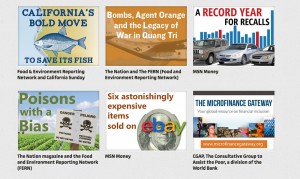Gay Talese shouldn’t have been able to talk to Joe DiMaggio. No one talked to Joe DiMaggio, not in depth anyway. Not enough to know that he spoke eloquently about Truman Capote’s In Cold Blood or that his preferred drink was tea unless he was preparing for a date, when it was vodka, or that he shunned married women because they reminded him of his ex-wife, the ever-elusive Marilyn Monroe.
Yet somehow, Talese got enough access to the great baseball icon to know all of these things, which he wove into an approximately 8,400-word Esquire piece that is arguably one of the best sports profiles ever written.
He was fiercely persistent, yes, but that was only partially responsible for his success. In an interview with sports and pop culture website Grantland, Talese revealed the real key to DiMaggio’s intimate circle: golf.
“Talese had been a caddie as a teenager. ‘I did know how to follow a ball, or at least I was lucky that day.’ Wearing a three-piece suit and shoes, Talese foraged in the brush and woods, and found three of DiMaggio’s errant shots. And after that round, ‘that was when I started having access.’”
Grantland published this newly uncovered anecdote and others as footnotes along with a reprint of the famous DiMaggio piece, “Silent Season of a Hero,” in October 2011. It was the fourth article featured in its Director’s Cut series, which republishes classic articles along with new annotations that provide details about how the story was reported.
More media outlets — mostly those geared toward a digital audience — are featuring archival longform work, with some including new insight gleaned from interviews with authors and editors. Similar to Grantland, sports website Deadspin publishes a section called The Stacks that’s billed as a “living archive of great journalism.”
Related story: “Why Sports Illustrated Highlights Classic Photos More Than Articles”
Longform.org exists for the sole purpose of recommending four longform articles per day; its editors draw on both classic and current pieces. In April 2012, on Longform.org’s two-year anniversary, the editors looked through its 100 most clicked stories — more than half were more than five years old.
“Good stories are going to endure,” said Max Linsky, co-founder of Longform.org. “If there was a way to buy stock in storytelling, I would be buying it.”
Longform is, almost by definition, not focused on breaking news — at least not while the news is breaking. There’s not enough time to delve into all the layers and complexities of a hockey enforcer who’s conflicted about his job or a man who has been married to nine different women, when you’re working against deadline. Thus, longform’s curse is that you don’t have to read it now. And yet its beauty stems from the same heartbeat: You can read it later.
Therein lies the value in longform stories that were published five, 10, 20 years ago; they’re still relevant by not needing to be relevant.
“A murder story in The New Yorker published in 1980 is still just as good today as it was then,” Linsky said. “With this kind of journalism, its value is in the story; it’s in the yarn.”
There’s still a strategy involved with publishing these old pieces. Grantland featured Hunter S. Thompson’s epic amalgam of Kentucky Derby antics and observations, “The Kentucky Derby Is Decadent and Depraved,” on May 4, 2012, the day before the race. On April 29, Jason Collins came out as the first openly gay male U.S. athlete actively playing a major professional sport; on April 30, Deadspin reprinted “The Brief Life And Complicated Death Of Tommy Lasorda’s Gay Son,” originally titled “Tangled Up in Blue” when it was published in GQ’s October 1992 issue.
Most of the time, these seminal stories rely on their classic themes to draw in readers. The audience can relate to the characters and situations in these pieces; the context might be different, but the message is the same.
Dan Fierman, deputy editor of Grantland, said Talese’s profile of DiMaggio contains these elements.
“In a sense, it’s about a different era in baseball and a different era of access and a different level of national fascination with baseball and baseball icons,” he said. “The majority of my job, really, and the majority of everybody’s job here is struggling with exactly that sort of thing, which is, how do you cover baseball in an Internet era?; how do you balance the desire to do something quality and take your time with it with the urgency and immediacy of the web? Fundamentally, the challenge of Grantland is how do you do that, so hearing Talese talk about that era had particular resonance because it spoke not only to the mission of the site but to the way things have changed.”
Inherent value does not necessarily come with age or length. Media outlets are trying to republish stories that are beautifully written, thoroughly reported and emotionally engaging — and happen to be old.
“Sometimes, you look at a longform piece from 1974, and it was 13,000 words and guess what, it … sucked,” said Alex Belth, who curates The Stacks for Deadspin and has been republishing classic longform on his own blog since about 2008.
On June 7, The Stacks reprinted “My Dinner With Ali,” a 1989 piece initially published in the Louisville Courier-Journal Magazine. The story involved a man who went to Muhammad Ali’s mother’s house and introduced himself as a fan. Ali then proceeded to spend the whole day with the man.
The story has received 276,375 likes and 75 comments as of Nov. 11. Belth said it “struck a chord in people.”
“They left all sorts of comments that were like, ‘Oh, yeah, I saw Ali in the airport once, and he was great,’” Belth said. “It was the idea of this icon being approachable, which was just true with Ali, that I think people really responded to.”
These stories provide information about the past that the reader might not have known before. This, too, is the rationale behind the extras — the annotations (Nieman Storyboard), footnotes (Grantland), podcasts (Longform.org) and postscripts (several outlets) — that publications break out when they republish pieces. With this, though, comes the danger of “inside baseball.”
For Fierman, dabbling in “inside baseball” is sort of the point with the Director’s Cut series. As a policy, Grantland does not discuss traffic, but Fierman said the feature was not designed to generate page views.
“There’s two things at work: 1. We’re process-oriented here; we’re all writers and editors so we’re interested in it,” he said, “and 2. Writers and editors have some of the greatest quotes in the world.”
The process of footnoting the pieces generally involves calling writers and asking about their memories of the pieces. For instance, Charles P. Pierce penned a 1997 profile of then 21-year-old Tiger Woods that Fierman said “convinced [Woods] that the media was out to get him.”
When Grantland went back to interview Pierce, the questions were obvious: What was it like to be limited to one hour of time with the man who was supposed to be the cover story? What was your overall impression of him? How did you feel when he was making jokes about black men and lesbians?
In the Grantland anecdote, Pierce is quoted as saying, “He [Tiger] was young. And then I thought to myself, ‘You know, after I graduated from college, my go-to default position in talking to groups of adults I didn’t know was not dirty jokes.’”
Tony Kornheiser, whose 1980 Nolan Ryan profile was published as Inside Sports’ first cover story, was the first one selected for the Director’s Cut.
“Back then, you’d try your best to write a piece that would make it impossible for anyone to write a piece about the guy for the next five years,” he said in a phone interview. “It was long: 2,500 to 3,000 words. That’s nothing with the Internet now — people write more than that just going to the bathroom.”
He said he was flattered that somebody wanted to deconstruct his piece yet he didn’t think he was the best person to interview. He remembered very little about how the story came about.
“At least in my case, I’m lucky to remember small impressionistic things about certain people or times,” he added. “I’m not going to be able to go line for line.”
Archival longform is especially well-suited to sports because sports aficionados love anniversary stories that look back at the history of their favorite teams or the backstory of athletes.
“What’s interesting about sports is it’s so confined,” said Glenn Stout, editor of The Best American Sports Writing series and content editor for SB Nation’s longform section. “It’s got borders on it. If you’re going back in politics, for instance, and straight political history, that goes all over the place. There’s no league of political history, but there is a league of football and you can trace that back.”
Any time a radical event occurs in sports, chances are it’s happened before in some form. Thus, old stories can provide new insight into what’s going on today. Andy Gray, a special projects producer at SI.com, described several cases where prominently displaying archival pieces would have improved coverage of current topics. For example, the NFL lockout last year closely resembled the one that happened 20 years before.
He said Sports Illustrated would be an especially good fit for featuring archival longform. It’s the oldest sports magazine still in publication and can draw from its own archives for these pieces — instead of requesting to republish articles that were originally released through different outlets.
Still, none of the outlets interviewed for this story said they had much difficulty getting permission to reprint classic pieces. The editors of magazines such as Esquire and GQ, which have run plenty of stories now considered classics, have been very willing to share their old gems with new readers.
As these new, online-only publications accumulate more and more repurposed content, they’re starting to gain their own reputations as publishers of high-quality stories. Now, they can move on to the next phase: generating revenue.
Stout said the format lends itself well to making profits.
“If you’re only on a page for 10 seconds, you’re not going to be engaged by an ad at all,” he said. “If you’re on a page for 20 minutes, and an ad can engage you for 10 seconds or 20 seconds or 30 seconds, if it’s got video and nice graphics and music and everything, ha ho, that’s a whole different thing. That’s a business model that can go forward.”









Leave a Comment